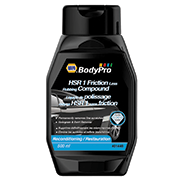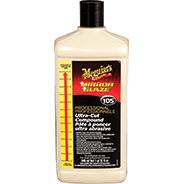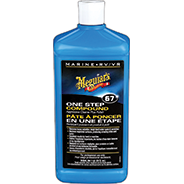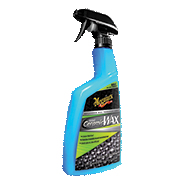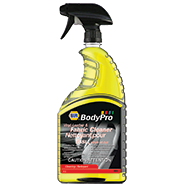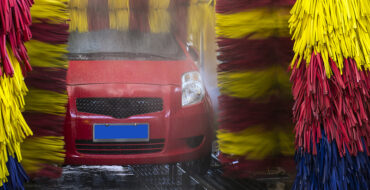Every car enthusiast cares about making their ride look its best out on the road. Compounding, polishing, and waxing help combat normal wear and tear while restoring your car’s exterior to its former glory. Let’s go over the differences between these three car detailing tasks and when to do them.
The Differences between Compound, Polish, and Wax
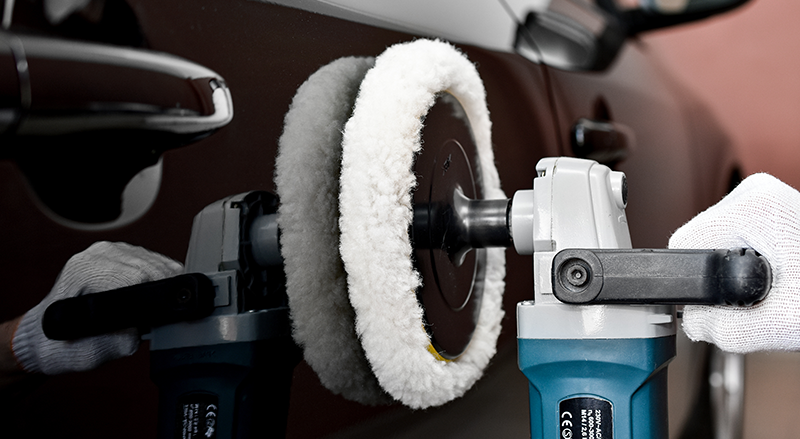
Compounding
Compounding is used to fix scratches and uneven areas on your car. Depending on the condition of your car’s paint, you’ll likely only need to use a compound once or twice a year. There are three varieties: rubbing, cutting, and polishing.
Rubbing compound is the most traditional type of compound. It’s made for general scratches and oxidation, using aluminum oxide or silicon carbide as an abrasive. It works by removing the top layer of paint from your car to reveal a smooth surface underneath. After using a rubbing compound, you’ll need to do some paint restoration, followed by polishing.
A cutting compound is more aggressive than a rubbing compound. You’ll want to use a cutting compound if you’re tackling heavy imperfections that a rubbing compound can’t remedy. Most cutting compounds contain cerium oxide or diamond dust as an abrasive. If your car’s paintwork is in very poor condition, a cutting compound is likely your best option.
Because they are highly abrasive, rubbing and cutting compounds can damage your car if not used correctly. Always follow the instructions on the product you purchase to avoid creating more repair work for yourself.
Polishing compound is essentially the same as regular polish. It’s much milder than rubbing and cutting compounds and uses clay or jeweller’s rouge as an abrasive. Polishing compound is designed to remove fine scratches and swirl marks. It’s a better choice than rubbing or cutting compound if your car’s paint is generally in good condition.
Polishing
Polishes are designed to spruce up your car’s exterior when it looks faded or dull. They’re much gentler than compounds because they’re not meant to remove any paint. Instead, they smooth out the paint’s surface to brighten its shine. They’re ideal to use on surface scratches, swirl marks, and mild stains from dirt or other debris. Polish your car once or twice a year. If you polish it too often, you can thin out the paint, exposing it to damage.
The most effective way to apply car polish is with an orbital buffer, which will massage the polish into the car’s paint. If you’re new to polishing, start by doing it by hand. It’ll take longer, but you’ll eliminate the risk of taking off any paint, which can happen if you’re too aggressive with a buffer.
Both compounding and polishing are types of paint correction. Paint correction is often needed when a car’s clear coat becomes damaged or uneven. This is usually caused by use of the wrong soap or washing technique, as washing your car incorrectly can result in scratches or swirl marks. Follow this guide on how to properly wash your car. To learn how to pick the best soap for your needs, check out this article .
Waxing
Like polish, car wax cleans up a car’s exterior, but it also provides a layer of protection. It acts as a barrier, preventing elements like UV rays and road salt from damaging the paint. This protective effect typically lasts two to three months, depending on the product. You should apply wax to your car once or twice a year (i.e., whenever you polish it).
Car wax comes in liquid, paste, and spray form. Spray waxes are generally the easiest to use, making them ideal for inexperienced DIYers. Liquid wax takes more skill to apply but may give you a slightly cleaner finish. Follow the directions on whichever wax you select and keep it away from any incompatible surfaces.
You can also pick your car wax based on its ingredients. Ceramic waxes, like this one, have hydrophobic properties. This means they shed water more easily than other waxes, which prevents water spotting on your car’s paint. They’re also more resistant to heat and UV rays. You may be tempted to choose carnauba wax because it’s a natural wax. Carnauba is certainly durable and leaves a nice shine, but waxes made of synthetic ingredients, like silicone and ceramic waxes, are much longer-lasting.
To fully detail your car’s exterior, follow these steps:
- Wash your entire car. Start at the top and move downwards.
- Once your car is fully dry, apply a rubbing or cutting compound to remove deep scratches.
- Restore the paintwork, if needed.
- Apply a polish.
- Lock in your work with a layer of wax.
Detailing Your Vehicle
Once you’re satisfied with the outside of your car, you can move on to an interior detailing session. Products like fabric cleaner, glass cleaner, and multipurpose cleaner will come in handy here.
For more advice on car care and maintenance, visit a NAPA Auto Parts store to speak with an expert.

